Abstract
A total of 224 strains of Clostridium botulinum (including isolates from 14 patients with infant botulism and 4 with wound botulism) and 15 strains of C. sporogenes were tested by agar dilution for susceptibility to tetracycline, metronidazole, erythromycin, penicillin, rifampin, chloramphenicol, clindamycin, cephalothin, cefoxitin, vancomycin, sulfamethoxazole-trimethoprim, nalidixic acid, and gentamicin. At least 90% of the C. botulinum strains tested (except for nonproteolytic strains of toxin type F with penicillin) were susceptible to all drugs except sulfamethoxazole-trimethoprim, nalidixic acid, and gentamicin. Minimal inhibitory concentrations for strains from patients with infant and wound botulism were similar to those for other C. botulinum strains.
Full text
PDF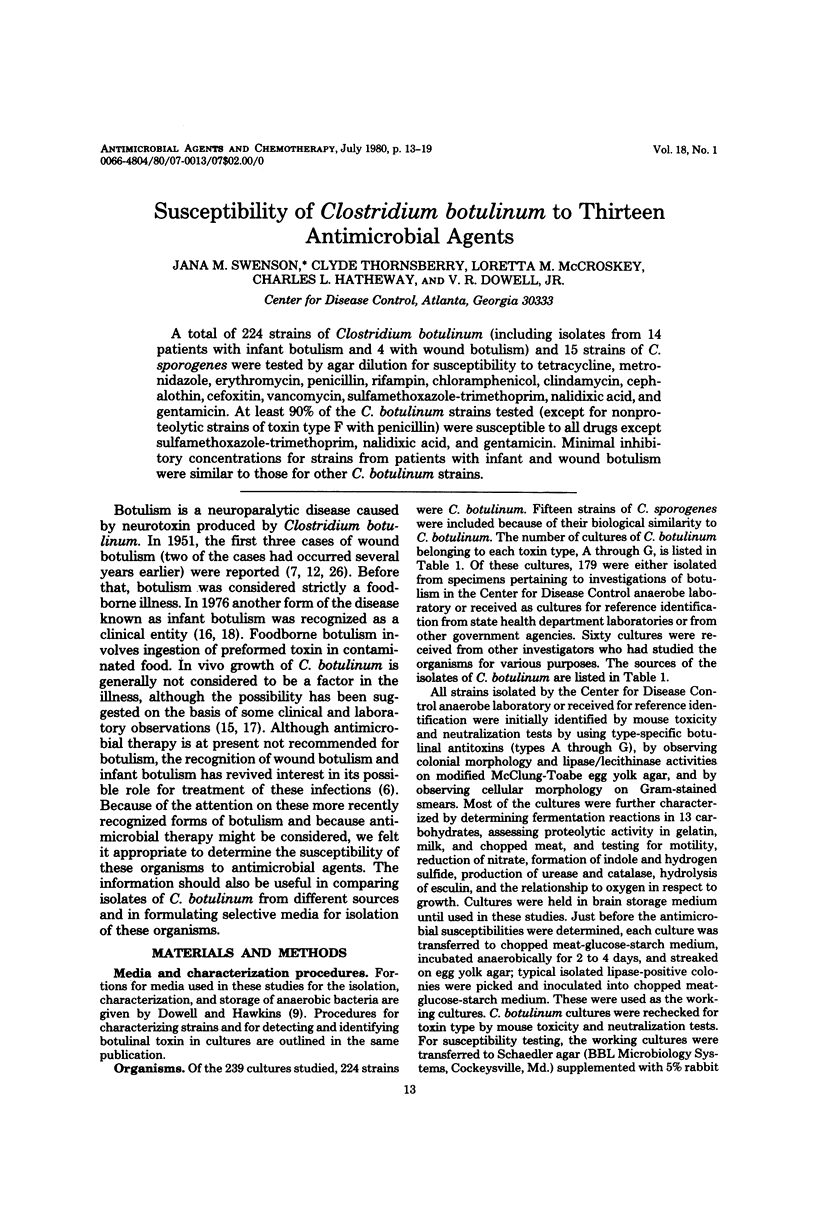
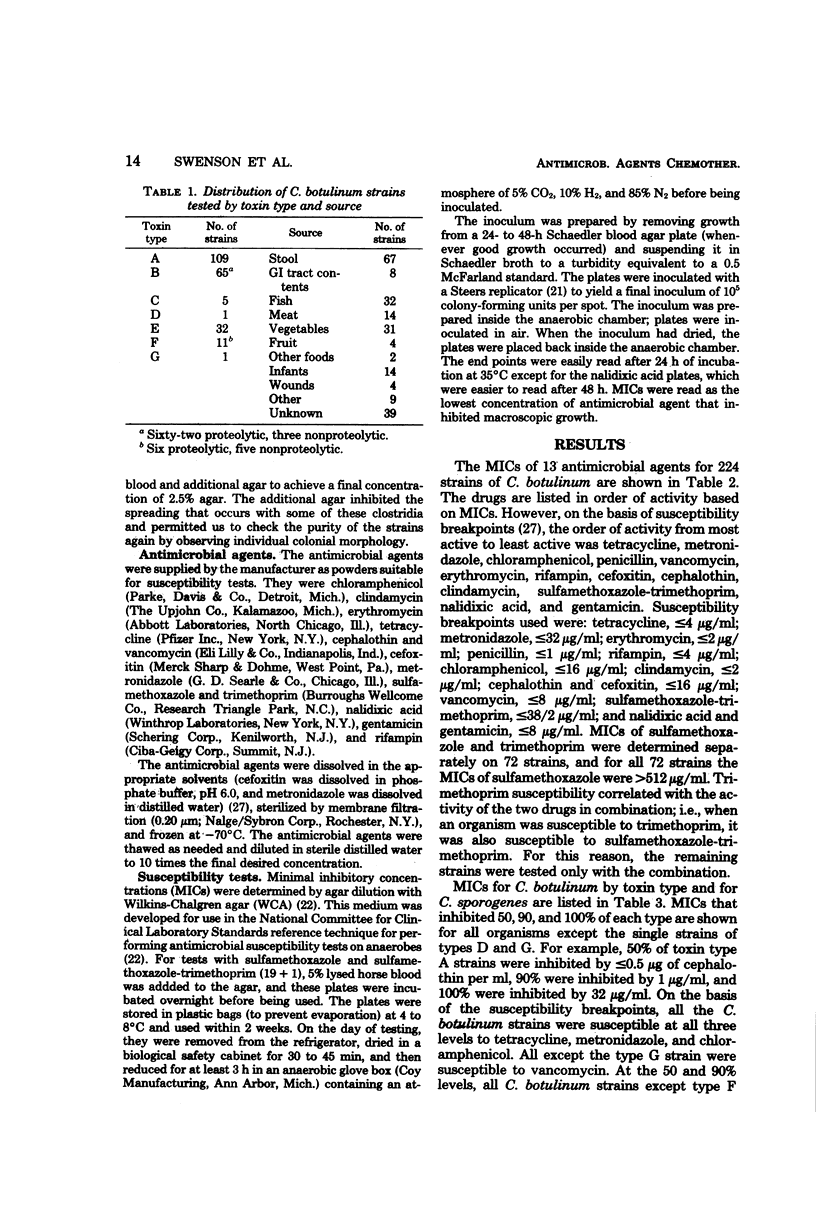
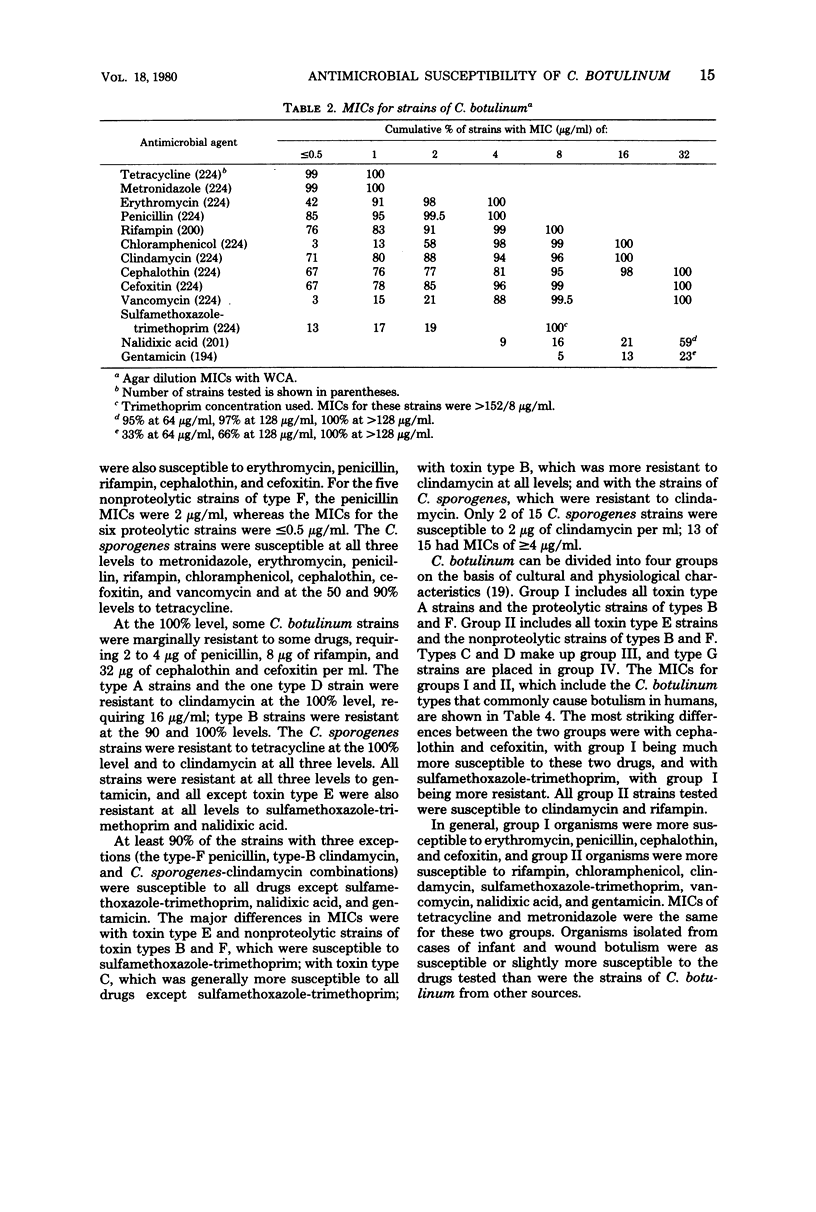
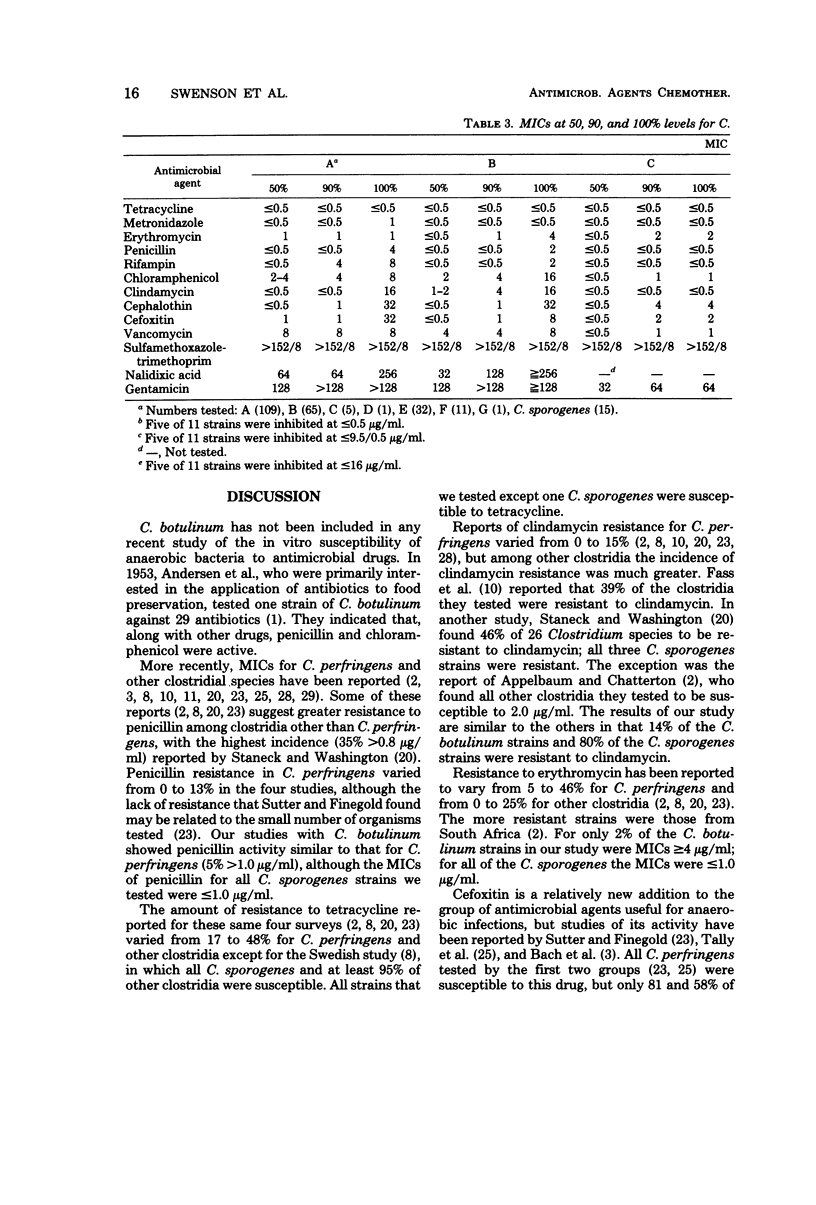
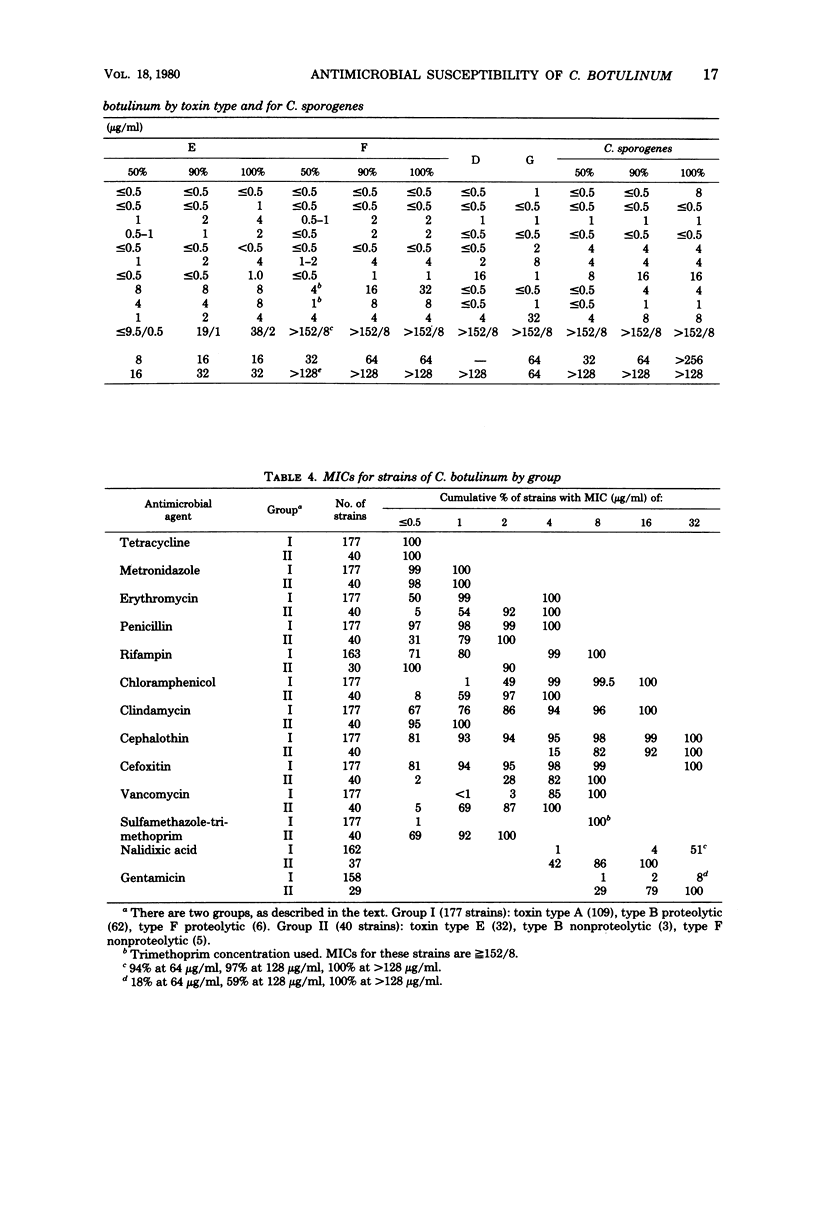
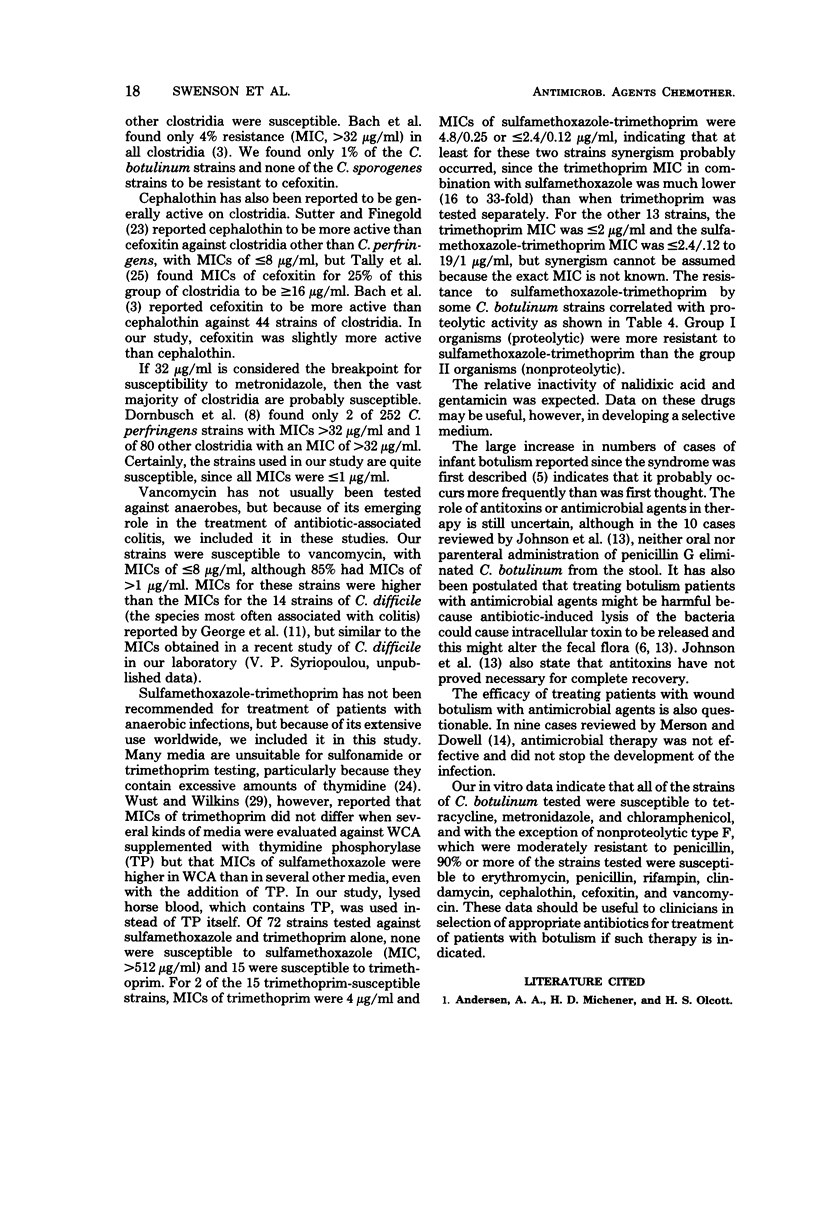
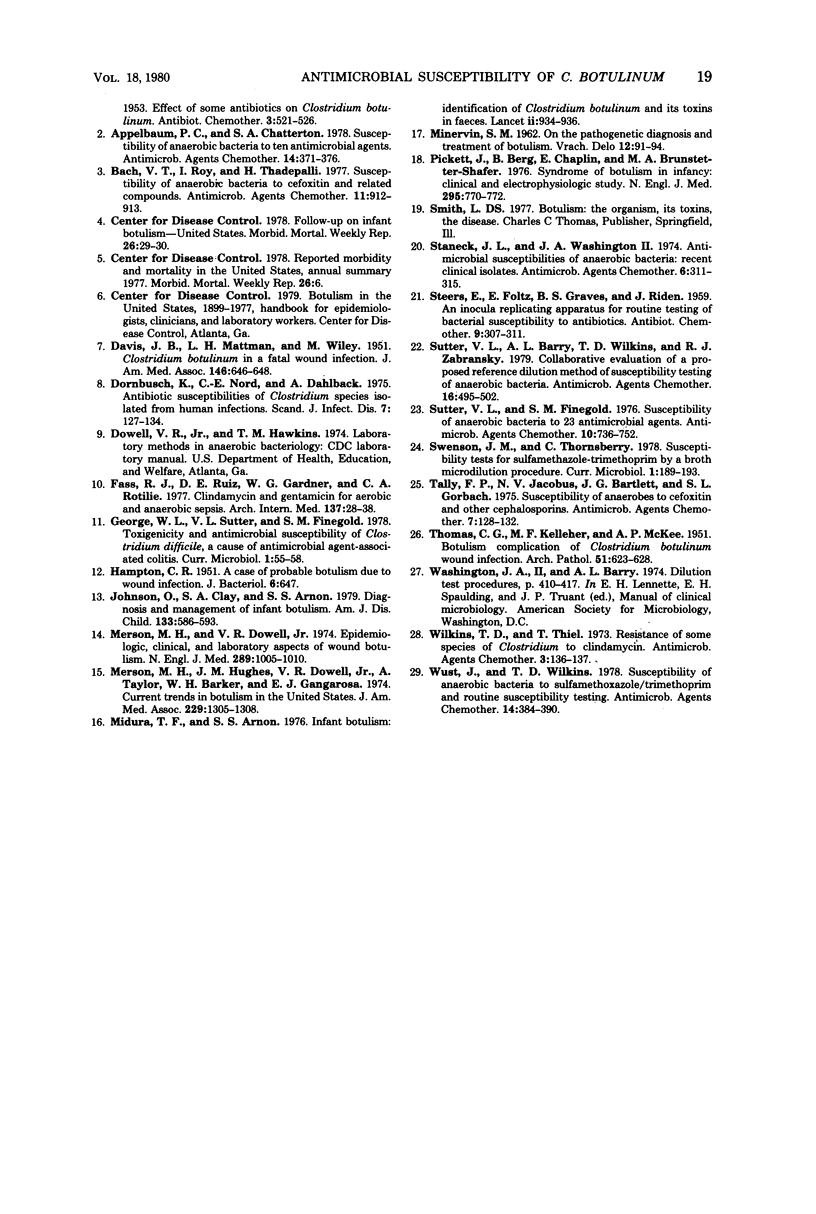
Selected References
These references are in PubMed. This may not be the complete list of references from this article.
- Appelbaum P. C., Chatterton S. A. Susceptibility of anaerobic bacteria to ten antimicrobial agents. Antimicrob Agents Chemother. 1978 Sep;14(3):371–376. doi: 10.1128/aac.14.3.371. [DOI] [PMC free article] [PubMed] [Google Scholar]
- Bach V. T., Roy I., Thadepalli H. Susceptibility of anaerobic bacteria to cofoxitin and related compounds. Antimicrob Agents Chemother. 1977 May;11(5):912–913. doi: 10.1128/aac.11.5.912. [DOI] [PMC free article] [PubMed] [Google Scholar]
- DAVIS J. B., MATTMAN L. H., WILEY M. Clostridium botulinum in a fatal wound infection. J Am Med Assoc. 1951 Jun 16;146(7):646–648. doi: 10.1001/jama.1951.63670070006009d. [DOI] [PubMed] [Google Scholar]
- Dornbusch K., Nord C. E., Dahlbäck A. Antibiotic susceptibility of Clostridium species isolated from human infections. Scand J Infect Dis. 1975;7(2):127–134. doi: 10.3109/inf.1975.7.issue-2.09. [DOI] [PubMed] [Google Scholar]
- Fass R. J., Ruiz D. E., Gardner W. G., Rotilie C. A. Clindamycin and gentamicin for aerobic and anaerobic sepsis. Arch Intern Med. 1977 Jan;137(1):28–38. [PubMed] [Google Scholar]
- Johnson R. O., Clay S. A., Arnon S. S. Diagnosis and management of infant botulism. Am J Dis Child. 1979 Jun;133(6):586–593. doi: 10.1001/archpedi.1979.02130060026004. [DOI] [PubMed] [Google Scholar]
- Merson M. H., Dowell V. R., Jr Epidemiologic, clinical and laboratory aspects of wound botulism. N Engl J Med. 1973 Nov 8;289(19):1005–1010. doi: 10.1056/NEJM197311082891904. [DOI] [PubMed] [Google Scholar]
- Merson M. H., Hughes J. M., Dowell V. R., Taylor A., Barker W. H., Gangarosa E. J. Current trends in botulism in the United States. JAMA. 1974 Sep 2;229(10):1305–1308. [PubMed] [Google Scholar]
- Midura T. F., Arnon S. S. Infant botulism. Identification of Clostridium botulinum and its toxins in faeces. Lancet. 1976 Oct 30;2(7992):934–936. doi: 10.1016/s0140-6736(76)90894-1. [DOI] [PubMed] [Google Scholar]
- Pickett J., Berg B., Chaplin E., Brunstetter-Shafer M. A. Syndrome of botulism in infancy: clinical and electrophysiologic study. N Engl J Med. 1976 Sep 30;295(14):770–772. doi: 10.1056/NEJM197609302951407. [DOI] [PubMed] [Google Scholar]
- Staneck J. L., Washington J. A., 2nd Antimicrobial susceptibilities of anaerobic bacteria: recent clinical isolates. Antimicrob Agents Chemother. 1974 Sep;6(3):311–315. doi: 10.1128/aac.6.3.311. [DOI] [PMC free article] [PubMed] [Google Scholar]
- Sutter V. L., Barry A. L., Wilkins T. D., Zabransky R. J. Collaborative evaluation of a proposed reference dilution method of susceptibility testing of anaerobic bacteria. Antimicrob Agents Chemother. 1979 Oct;16(4):495–502. doi: 10.1128/aac.16.4.495. [DOI] [PMC free article] [PubMed] [Google Scholar]
- Sutter V. L., Finegold S. M. Susceptibility of anaerobic bacteria to 23 antimicrobial agents. Antimicrob Agents Chemother. 1976 Oct;10(4):736–752. doi: 10.1128/aac.10.4.736. [DOI] [PMC free article] [PubMed] [Google Scholar]
- THOMAS C. G., Jr, KELEHER M. F., McKEE A. P. Botulism, a complication of Clostridium botulinum wound infection. AMA Arch Pathol. 1951 Jun;51(6):623–628. [PubMed] [Google Scholar]
- Tally F. P., Jacobus N. V., Bartlett J. G., Gorbach S. L. Susceptibility of anaerobes to cefoxitin and other cephalosporins. Antimicrob Agents Chemother. 1975 Feb;7(2):128–132. doi: 10.1128/aac.7.2.128. [DOI] [PMC free article] [PubMed] [Google Scholar]
- Wilkins T. D., Thiel T. Resistance of some species of Clostridium to clindamycin. Antimicrob Agents Chemother. 1973 Jan;3(1):136–137. doi: 10.1128/aac.3.1.136. [DOI] [PMC free article] [PubMed] [Google Scholar]
- Wüst J., Wilkins T. D. Susceptibility of anaerobic bacteria to sulfamethoxazole/trimethoprim and routine susceptibility testing. Antimicrob Agents Chemother. 1978 Sep;14(3):384–390. doi: 10.1128/aac.14.3.384. [DOI] [PMC free article] [PubMed] [Google Scholar]


